Synopsis
The treatise begins with an introduction. In the Latin edition, this is replaced by a different and longer introduction. The treatise attempts to answer three questions about a crusade to recover the Holy Land: the proper season of the year for such an undertaking, the port of disembarkation and the route from there to Jerusalem and how to invade Egypt after the Holy Land has been secured.
In answer to the first question, the ideal date for arriving in the Holy Land is said to be the Feast of the Cross (14 September). The Latin version specifies that the proper day for sailing to meet this timeline is eight days before the middle of August. The reasons given for choosing the late summer are primarily meteorological.
In answering the second question, the author considers and excludes the ports of Alexandria, Damietta, Acre and Tripoli, as well as a landing on Cyprus. Alexandria, in enemy hands, is said to be too difficult to take. Damietta is in a ruined state and its port insufficient. The ports of Acre and Tripoli are likewise insufficient and the surrounding territory too hostile. The disadvantages of landing in Cyprus are apparent from the Seventh Crusade. The ideal port is said to be Ayas in Cilician Armenia. The army should winter there and begin its march the following spring by way of Antioch and Damascus. In this section, the author shows good knowledge of Armenia.
In the final section, the author describes the route of march from Gaza to Cairo, naming the inhabited places, the possibilities for provisioning and giving relative distances.
The Latin edition deletes sections on establishing an alliance with the Mongols and on wintering the fleet in Ayas and using it during land operations. It adds a section on financing the crusade and reorganizing the Kingdom of Jerusalem after a successful expedition.
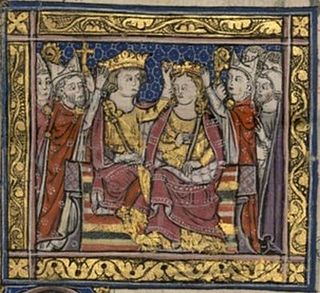
John of Brienne, also known as John I, was King of Jerusalem from 1210 to 1225 and Latin Emperor of Constantinople from 1229 to 1237. He was the youngest son of Erard II of Brienne, a wealthy nobleman in Champagne. John, originally destined for an ecclesiastical career, became a knight and owned small estates in Champagne around 1200. After the death of his brother, Walter III, he ruled the County of Brienne on behalf of his minor nephew Walter IV.

The Crusader states, or Outremer, were four Catholic polities that existed in the Levant from 1098 to 1291. Following the principles of feudalism, the foundation for these polities was laid by the First Crusade, which was proclaimed by the Latin Church in 1095 in order to reclaim the Holy Land after it was lost to the 7th-century Muslim conquest. Situated on the Eastern Mediterranean, the four states were, in order from north to south: the County of Edessa (1098–1150), the Principality of Antioch (1098–1268), the County of Tripoli (1102–1289), and the Kingdom of Jerusalem (1099–1291). The three northern states covered an area in what is now southeastern Turkey, northwestern Syria, and northern Lebanon; and the Kingdom of Jerusalem, the southernmost and most prominent state, covered an area in what is now Israel, the State of Palestine, southern Lebanon, and western Jordan. The description "Crusader states" can be misleading, as from 1130 onwards, very few people among the Franks were Crusaders. Medieval and modern writers use the term "Outremer" as a synonym, derived from the French word for overseas.
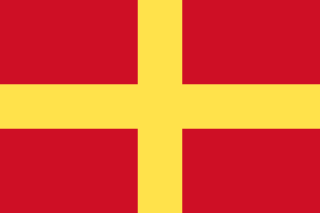
The County of Tripoli (1102–1289) was one of the Crusader states. It was founded in the Levant in the modern-day region of Tripoli, northern Lebanon and parts of western Syria. When the Frankish Crusaders – mostly southern French forces – captured the region in 1109, Bertrand of Toulouse became the first count of Tripoli as a vassal of King Baldwin I of Jerusalem. From that time, the rule of the county was decided not strictly by inheritance but by factors such as military force, favour and negotiation. In 1289 the County of Tripoli fell to Sultan Qalawun of the Muslim Mamluks of Cairo. The county was absorbed into Mamluk Egypt.
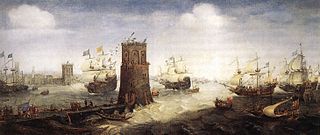
The Fifth Crusade (1217–1221) was a campaign in a series of Crusades by Western Europeans to reacquire Jerusalem and the rest of the Holy Land by first conquering Egypt, ruled by the powerful Ayyubid sultanate, led by al-Adil, brother of Saladin.

The Seventh Crusade (1248–1254) was the first of the two Crusades led by Louis IX of France. Also known as the Crusade of Louis IX to the Holy Land, it aimed to reclaim the Holy Land by attacking Egypt, the main seat of Muslim power in the Near East. The Crusade was conducted in response to setbacks in the Kingdom of Jerusalem, beginning with the loss of the Holy City in 1244, and was preached by Innocent IV in conjunction with a crusade against emperor Frederick II, Baltic rebellions and Mongol incursions. After initial success, the crusade ended in defeat, with most of the army – including the king – captured by the Muslims.
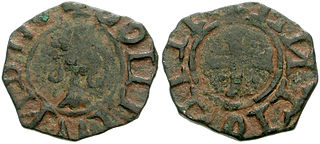
Bohemond IV of Antioch, also known as Bohemond the One-Eyed, was Count of Tripoli from 1187 to 1233, and Prince of Antioch from 1201 to 1216 and from 1219 to 1233. He was the younger son of Bohemond III of Antioch. The dying Raymond III of Tripoli offered his county to Bohemond's elder brother, Raymond, but their father sent Bohemond to Tripoli in late 1187. Saladin, the Ayyubid sultan of Egypt and Syria, conquered the county, save for the capital and two fortresses, in summer 1188.
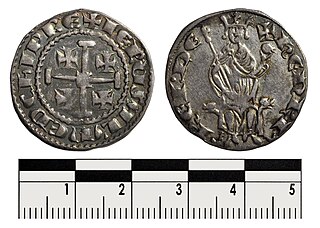
Henry II was the last crowned King of Jerusalem and also ruled as King of Cyprus. He was of the Lusignan dynasty.
Amalric, Lord of Tyre, also called Amalric of Lusignan or Amaury de Lusignan was a prince and statesman of the House of Lusignan, a younger son of King Hugh III of Cyprus and Isabella of the House of Ibelin. He was given the title of Lord of Tyre in 1291, shortly before the city of Tyre fell to the Mamluks of Egypt. He is often but incorrectly called the Prince of Tyre.

Marino SanutoTorsello was a Venetian statesman and geographer. He is best known for his lifelong attempts to revive the crusading spirit and movement; with this objective he wrote his Liber Secretorum Fidelium Crucis.

Crusader art or the art of the Crusades, meaning primarily the art produced in Middle Eastern areas under Crusader control, spanned two artistic periods in Europe, the Romanesque and the Gothic, but in the Crusader kingdoms of the Levant the Gothic style barely appeared. The military crusaders themselves were mostly interested in artistic and development matters, or sophisticated in their taste, and much of their art was destroyed in the loss of their kingdoms so that only a few pieces survive today. Probably their most notable and influential artistic achievement was the Crusader castles, many of which achieve a stark, massive beauty. They developed the Byzantine methods of city-fortification for stand-alone castles far larger than any constructed before, either locally or in Europe.

Guérin de Montaigu, also known as Garin de Montaigu or Pierre Guérin de Montaigu, was a nobleman from Auvergne, who became the fourteenth Grand Master of the Knights Hospitaller, serving from 1207–1228. He succeeded the Grand Master Geoffroy le Rat after his death in 1206, and was succeeded by Bertrand de Thessy.

Hayton of Corycus was a medieval Armenian nobleman, monk and historiographer.

Otto de Grandson, sometimes numbered Otto I to distinguish him from later members of his family with the same name, was the most prominent of the Savoyard knights in the service of King Edward I of England, to whom he was the closest personal friend and many of whose interests he shared.

The Fall of Tripoli was the capture and destruction of the Crusader state, the County of Tripoli, by the Muslim Mamluks. The battle occurred in 1289 and was an important event in the Crusades, as it marked the capture of one of the few remaining major possessions of the Crusaders. The event is represented in a rare surviving illustration from a now fragmentary manuscript known as the 'Cocharelli Codex', thought to have been created in Genoa in the 1330s. The image shows the countess Lucia, Countess of Tripoli and Bartholomew, Bishop of Tortosa sitting in state in the centre of the fortified city, and Qalawun's assault in 1289, with his army depicted massacring the inhabitants fleeing to boats in the harbour and to the nearby island of St Thomas.

The fall of Ruad in 1302 was one of the culminating events of the Crusades in the Eastern Mediterranean. In 1291, the Crusaders had lost their main power base at the coastal city of Acre, and the Muslim Mamluks had been systematically destroying the remaining Crusader ports and fortresses in the region, forcing the Crusaders to relocate the dwindling Kingdom of Jerusalem to the island of Cyprus. In 1299–1300, the Cypriots sought to retake the Syrian port city of Tortosa, by setting up a staging area on Ruad, two miles (3 km) off the coast of Tortosa. The plans were to coordinate an offensive between the forces of the Crusaders, and those of the Ilkhanate. However, though the Crusaders successfully established a bridgehead on the island, the Mongols did not arrive, and the Crusaders were forced to withdraw the bulk of their forces to Cyprus. The Knights Templar set up a permanent garrison on the island in 1300, but the Mamluks besieged and captured Ruad in 1302. With the loss of the island, the Crusaders lost their last foothold in the Holy Land and it marked the end of crusader presence in the Levant region.

Mongol Armenia or Ilkhanid Armenia refers to the period in which both Armenia and the Armenian Kingdom of Cilicia became tributary and vassal to the Mongol Empire in the 1230s. Armenia and Cilicia remained under Mongol influence until around 1335.
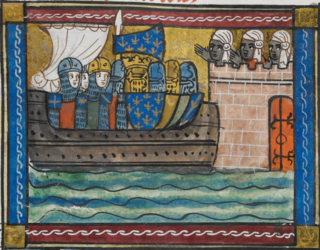
The Directorium ad faciendum passagium transmarinum is an anonymous 24,000-word Latin treatise on crusading submitted to King Philip VI of France on 26 July 1330 or 1332. The treatise proposes the conquest of the Holy Land, the Byzantine Empire and Russia and their subjection to the Catholic Church; outlines how this might be achieved; and describes how the conquered territories could be administered.

The fall of Outremer describes the history of the Kingdom of Jerusalem from the end of the last European Crusade to the Holy Land in 1272 until the final loss in 1302. The kingdom was the center of Outremer—the four Crusader states—formed after the First Crusade in 1099 and reached its peak in 1187. The loss of Jerusalem in that year began the century-long decline. The years 1272–1302 are fraught with many conflicts throughout the Levant as well as the Mediterranean and Western European regions, and many Crusades were proposed to free the Holy Land from Mamluk control. The major players fighting the Muslims included the kings of England and France, the kingdoms of Cyprus and Sicily, the three Military Orders and Mongol Ilkhanate. Traditionally, the end of Western European presence in the Holy Land is identified as their defeat at the Siege of Acre in 1291, but the Christian forces managed to hold on to the small island fortress of Ruad until 1302.

The history of the Knights Hospitaller in the Levant is concerned with the early years of the Order of the Hospital of St. John of Jerusalem, the Knights Hospitaller, through 1309. The Order was formed in the later part of the eleventh century and played a major role in the Kingdom of Jerusalem, in particular, the Crusades. This lasted until the West was expelled from the Holy Land, with the Order conquering Rhodes in the early fourteenth century. Among the most important internal events of the early years of the kingdom were the foundation of the Military Orders, which included the Hospitallers, the Knights Templar and the Teutonic Order. Unlike the Hospitallers' beginnings as a benevolent organization, the Templars and Teutonic knights began with a military mission. These three major Orders would play a major role in the military activities of the kingdom, sometimes cooperatively, sometimes not. On the battlefield they frequently shared among them the most important tactical roles, the vanguard and rear-guard.
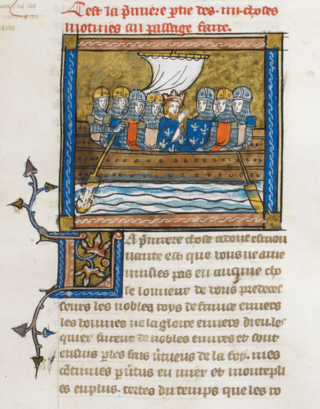
The theme of recovery of the Holy Land was a genre in High–Late Medieval Christian literature about the Crusades. It consisted of treatises and memoranda on how to recover the Holy Land for Christendom, first appearing in preparation for the Second Council of Lyon in 1274. They proliferated following the loss of Acre in 1291, shortly after which the permanent Crusader presence in the Holy Land came to an end, but mostly disappeared with the cancellation of Philip VI of France's planned crusade in 1336 and the start of the Hundred Years' War between England and France the next year. The high point of recovery proposals was the pontificate of Clement V.



















